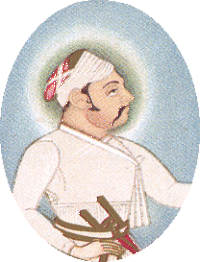ANGLOSIKH TREATY (1840). In 1832, a treaty was executed by Lord William Bentinck, the Governor General of India, through Col. C.M. Wade, with the Lahore Darbar concerning navigation through the Sutlej and the Indus rivers within the Khalsa territory. Another treaty on the subject was subsequently executed in 1834, fixing a duty on every mercantile boat, independent of its freight and of the nature of its merchandise.A third treaty was executed on this subject on the arrival of George Russell Clerk, agent to the Governor General, at the Sikh Darbar, in May 1839, adjusting the rate of duties on merchandise, according to quantity and kind.
hills
Explore the deeper meaning of Aarti in Hinduism and Sikhism, where true worship goes beyond rituals and embraces the beauty of nature and truth.
Explore the profound concept of Aatma and its connection to Paramaatma, God, and the transcendental self in Sikh and Hindu philosophies.
Explore the distinctive and largely unknown Sikh architectural style, with its rich history in gurdwaras, forts, and palaces, by S.S. Bhatti.
Discover the captivating history and architecture of Samman Burj, the octagonal Mughal marvel in Lahore Fort, known for its royal and administrative legacy.
Explore the profound concept of Aatma and its connection to Paramaatma, God, and the transcendental self in Sikh and Hindu philosophies.
Explore the deeper meaning of Aarti in Hinduism and Sikhism, where true worship goes beyond rituals and embraces the beauty of nature and truth.
Explore the profound concept of Aatma and its connection to Paramaatma, God, and the transcendental self in Sikh and Hindu philosophies.
Explore the deeper meaning of Aarti in Hinduism and Sikhism, where true worship goes beyond rituals and embraces the beauty of nature and truth.



